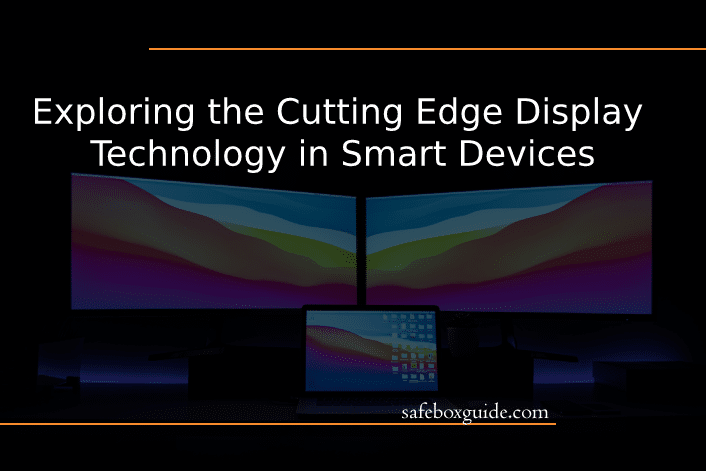Innovative, connected products are changing industries. They introduce new suppliers who provide sensor technology, microprocessors and software, connectivity, embedded operating systems, data storage, and analytics.
Smart displays can deliver the at-a-glance world and local news, weather reports, and sports scores. They can also serve as central hubs for smart home devices.

Contents
Transparent OLED Displays
Transparent OLED displays provide a truly innovative digital experience by overlaying transparent images over real-world objects. They offer the potential to create a new world of augmented reality applications, transforming how we interact with technology and the environment.
Unlike LCDs, OLED screens are light and thin so that they can be built into the glass of any device or building. It allows them to blend in seamlessly with the surroundings, becoming part of the environment rather than a distraction or eye-catcher.
It opens up a massive range of new possibilities in digital signage. For example, they can display information on car windshields, allowing drivers to see road maps or directions without obscuring the view. In retail and shopping, they can be installed in glass windows or counters to showcase products or promotions dynamically and interactively. They can also be used in museums or airports to show flight schedules or other vital information without blocking views of the surrounding environment.
LCD
Over the last few years, OLED has slowly replaced LCD in smartphones and other flagship devices. The advantage of OLED is that it doesn’t need a backlight, making it thinner and more energy-efficient.
LCDs use liquid crystals to rotate polarized light through the front and rear filters. When an electric field is applied, the molecules untwist, and the pixels on the screen are lit. This technology has been used since the 1980s in calculators, utility meters, and early-time digital watches.
This passive matrix LCD has many limitations, including a narrow viewing angle, slow response speed, and low power consumption. To solve these problems and enhance the functionality of LCD screens, scientists and engineers have created active matrix LCD (IPS) technology. IPS displays have exceptional contrast, wide viewing angles, and quick reaction times. Furthermore, it is free of burn-in flaws. about larger panels like TVs and laptops, this pixel arrangement is typical. For more information about LCD, go to samsungparts.com.
Quantum Dot
Quantum dots are human-made nanoparticles that have semiconductor properties. They absorb a particular wavelength of light and then re-emit it with a specific color. The size of the particle determines which wavelength it emits. Smaller dots emit more blue, and larger ones emit more red.
The ability of quantum dot displays to produce a wide range of colors results in eye-popping visuals. They can achieve higher peak brightness than OLEDs, meaning they can overpower the glare of direct sunlight.
In addition, they don’t degrade over time, which can happen in LCD screens if not backlit. It gives them a much longer lifespan than OLEDs and helps prevent burn-in.
Quantum dot TVs are available today but often have a premium price tag. Samsung is spearheading a move to combine quantum dots with OLED for a more cost-effective solution that can bring the best of both worlds. In addition to providing more accurate and brighter colors, QD-OLED displays have faster response times than LCDs, so you can watch fast-paced sports or play games without suffering from blurriness or motion blur.

Low-Power Displays
The display is one of the biggest consumers of power in smart devices. With the emergence of wireless devices that rely on small batteries and don’t have room for bulky power cords, there is an increased demand to minimize the amount of energy the display uses.
Two of the most common types of low-power displays are bistable and LCDs with lower refresh rates. These are typically used when a battery-powered device needs long operating windows and wants daylight readable. Examples include e-readers, electronic price tags, and other secondary displays in portable devices.
OLED displays are another excellent choice for low-power displays. They don’t need a backlight and only use power when pixels are changing state. OLEDs are much more energy efficient than LCDs and must keep their backlights on even when the image is black.

